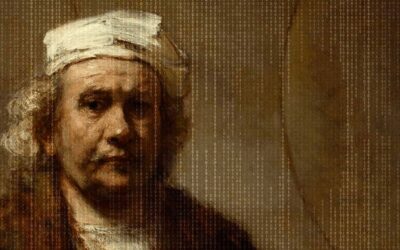Using the Museum CMS to Offer Cultural Heritage Experiences

Rachael Cristine Woody
A CHE-based exhibit presents the tangible alongside the intangible in a way that offers an opportunity for the visitor to experience a different cultural group’s heritage through multiple sensorial inputs.
Recent studies have shown that when we experience the elements that make up what life is like for individuals who are different from us, it helps us cultivate compassion for those outside our known community group.
What is a CHE?
In a previous post (The Value of Cultural Heritage Experiences in the Museum) we defined CHEs and discussed how they can be incorporated within a physical exhibit. This post will explore how CHEs can be constructed within a digital environment with the support of the museum Collections Management System (CMS).
As a quick refresher here’s the Definition of Cultural Heritage, as provided by United Nations Educational, Scientific, and Cultural Organizations (UNESCO):
UNESCO definition of tangible cultural heritage:
- movable cultural heritage (paintings, sculptures, coins, manuscripts)
- immovable cultural heritage (monuments, archaeological sites, and so on)
- underwater cultural heritage (shipwrecks, underwater ruins and cities)
UNESCO definition of intangible cultural heritage:
- oral traditions, performing arts, rituals
Tangible and intangible heritage elements work together to create a composite of a cultural group’s lifestyle, value systems, beliefs, and traditions. Pairing tangible with intangible culture helps to create a Cultural Heritage Experience (CHE).
First, Understand the Ethnographic Community and Collection
CHEs inherently involve ethnographic communities and it’s important to know what community the collection is related to. Ethnographic communities can be identified as having “mutual differences” such as: ethnicity, race, gender identification, sexual orientation, geographic, or otherwise identifiable cultural markers that merit community distinction. Many minority communities have been (and continue to be) mistreated and remain underrepresented in the museum. As such the museum has an ethical responsibility to care for and display the community’s heritage with the permission and input of the respective community members. This activity is also in support of the museum’s Diversity, Equity, Accessibility, and Inclusion (DEAI) practices.
Second, Respectfully Engage with the Community and Collection
Respectful engagement with a community needs to be prioritized before any work is done. For more information on how to responsibly work with community groups outside your own, please see our previous post on Responsible Practices for Working with Communities and Collections. Here are my four tips on how to establish a respectful community relationship:
- Seek and acquire the community’s permission to present the exhibit
- Solicit the community’s involvement in the creation of the exhibit
- Include, to the fullest extent possible, all accessories needed to provide authenticity to the CHE that will be a part of the exhibit
- Realize and respect that some experiences are sacred and cannot be replicated or shared
How to Use the Museum CMS to Digitally Construct a CHE
Now that we know what constitutes a CHE and how to respectfully engage with the ethnographic community involved, we can turn our attention to how CHEs can be presented digitally with the help of the museum CMS. Remember, the goal is to pair the intangible with the tangible, this can be done a few different ways with the museum CMS:
- Create pre-determined searches pulling the tangible and intangible items
- Construct curated portals presenting the tangible and intangible items together and with a narrative that explains what the CHE is, it’s importance to the community, and information about that community.
- Have records inter-link to related materials definitively tying items that should be experienced together.
Example: place audio or video of songs, ceremonies, or stories to be played alongside related tangible objects being viewed.
A Note on Virtual Reality
Museums can also deliver a CHE via virtual reality. A culturally important structure and relevant objects (the tangible elements of a culture) can be 3D imaged and recreated as a virtual setting. Then audio of a story teller or song (the intangible of a culture) can be played while visitors immerse themselves in a 3D cultural heritage experience.
For more on how museums can use VR as part of their exhibit experience please see previous post: The Future of Augmented and Virtual Reality (AR & VR) in Museums.
Conclusion
If you’re new to presenting CHEs digitally then begin with respectful experimentation. Play with the museum CMS display, test out specially curated portals, and consider a VR option. Technology improves daily which means the CMS and the tools we use for digital experiences will continue to evolve and help museum professionals create immersive, digital cultural heritage experiences.

Rachael Cristine Woody
Consultant, author, and blogger Rachael Cristine Woody advises on museum strategies, collections management, grant writing and the future of museums for a wide variety of clients. Learn about Lucidea’s Argus solution for museum collections management and download your free copy of Rachael’s book from Lucidea Press, How to Select, Buy, and Use a Museum CMS.
Never miss another post. Subscribe today!
Similar Posts
No-Code Digital Storytelling Example: Rembrandt’s Self-Portrait at Kenwood House
Explore how English Heritage’s Kenwood House uses the no-code platform Shorthand to bring Rembrandt’s Self-Portrait with Two Circles to life through visual storytelling and interactive design.
Exploring No-Code Digital Storytelling: Hoover’s “Fanning the Flames” Exhibit
Explore no-code digital storytelling with Hoover’s ‘Fanning the Flames’ exhibit. See how interactive tools (Deep Zoom Color Compare & Hot Spot) enhance user engagement and the visual experience.
An Introduction to Scrollytelling for Museums
Discover how museums use scrollytelling and digital storytelling platforms to create immersive narratives. This introduction explores key concepts and approaches to interactive storytelling.
Exploring Self-Determinate Multiple Pathways: An Example of Digital Storytelling
Discover how self-determinate multiple pathways offer flexible interactive storytelling in museum exhibits. Learn from the Tenement Museum’s ‘Your Story Our Story.’






Leave a Comment
Comments are reviewed and must adhere to our comments policy.
0 Comments